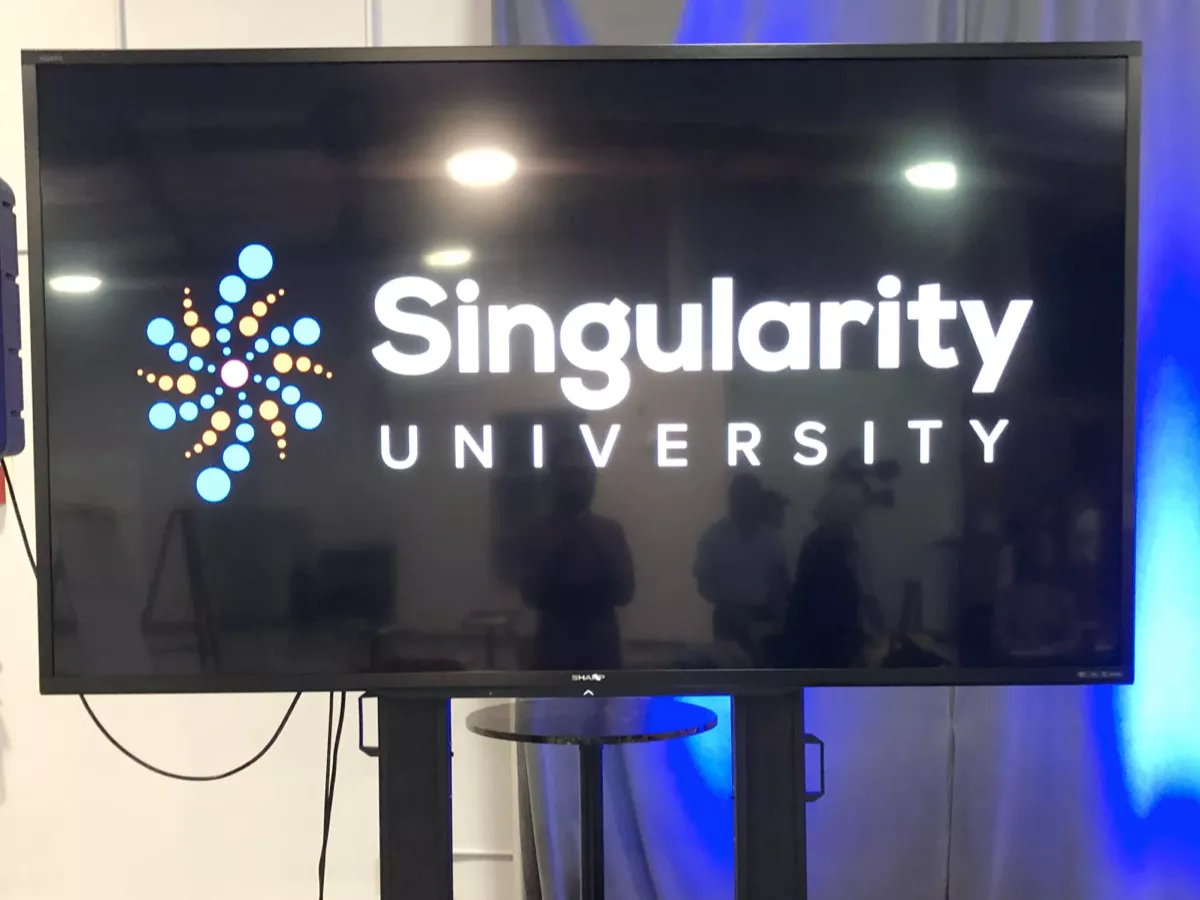Published on AgFunderNews by Lauren Manning
For Michell Zappa, living in the future is an everyday reality. The Sao Paulo, Brazil-based researcher spends most of his days writing, thinking, and discussing technology and painting a picture of what the future may hold. Today, Zappa serves as the founder and visionary of Envisioning, a virtual research institute that he founded in 2011. The institution, which has no owner, consists of decentralized teams around the world that are working toward gaining a better understanding of our future.
In 2014, Zappa worked with Policy Horizons Canada (PCH), to produce a report chronicling 15 agriculture innovations that may change the way we farm forever. One year later, Zappa is pleased to see that many of his predictions regarding the development and availability of certain agriculture technologies are becoming a reality.
“We did the research for the PCH report in 2012 and 2013. I’m happy the research seems to represent what’s going on today. Sometimes these things can take a very unpredictable path,” says Zappa. The 15 sectors chronicled in the report cover some of the most buzzworthy agtech innovations on the market, including sensors, automation, and biotech. “These three things are still very representative of what I see as the megatrend in agriculture, perhaps because they are interlinked. We can’t have one without the other two, but I think now there is one more thing we have to add to the list.”
More and more farmers are adopting sensors, drones, and iPads as part of their farming toolkits. The trend is by no means unique to the fields—food companies are opting for online platforms at an incredibly speedy rate. “There is a new term that I like to use: the Internet of Food. This reflects the digitalization of the industry as a whole,” says Zappa. “It encompasses the fact that the entire spectrum of our food production system is digitalizing to some extent.”
How does Zappa go about drawing the metes and bounds of our potential future? Through a process known as creative speculation, Zappa looks at the range of currently emerging technologies and tries to connect them in interesting ways. Zappa can get pretty close to divining what lies beyond the horizon by building from what’s already available.
A crucial part of honing in on his future view involves taking a healthy look at the past. As one of the oldest industries in the world, agriculture provides an often under-acknowledged window into the history of technological development in general. “Agriculture is one of—if not the premier—cornerstone of society. It’s something that we might take for granted,” says Zappa. The world wasn’t always full of wires, radio signals, wifi, and smart phones. When each of these technologies debuted, they marked a critical point in our societal progress towards achieving higher levels of technology.
Eventually, however, certain technologies become part of the norm and even expected. “There are things that get built into society’s perception, like plumbing, that become so ingrained in our expectation of how the world works that we stop seeing them as technologies,” Zappa explains. “We literally cannot imagine living without them.”
According to Zappa, the entire industry of agriculture is a technology within itself. As early humans spent less time hunting and gathering and more time sewing seeds in fertile ground, we not only found more reliable ways to feed ourselves, but an opportunity to create civilizations. In comparison to our early ancestors, most of us experience a remarkable level of food security. For them, figuring out what was for dinner was often a source of incredible stress—or even sometimes death. In most cases, getting food on the ancestral table was a round-the-clock job.
Today, agriculture has allowed us to take the uncertainty out of our food supply. The domestication of certain plants and animals meant we no longer had to follow them across the Earth in order to ensure our survival. Over time, the transition to agriculture-based societies facilitated the creation of modern-day urban centers, which frequently sit hundreds—if not thousands—of miles from where the food sold within their bounds was grown.
Viewing the agriculture industry as a technology is a critical tenant in Zappa’s thesis for farming’s future. “We see things as they are right now. If you take a few steps back, you realize that these things we have made evolve over time at very different paces,” he says. “Because agriculture is so old, I think it’s important to highlight the idea that as you’re thinking about the future of this space, it’s not only the tractors, the telematics, the sensors, the individual pieces of local tech that matter, but rather the whole chain or ecosystem.”
As a result of this “big picture” view, Zappa makes it easy to see how it’s not just certain sectors or farming practices that are getting a makeover. Rather, the entire system is being refreshed. As Silicon Valley continues to catapult agriculture into the future, Zappa encourages innovators and researchers to keep this broad view of the industry in mind. “If you take that as a premise, and think about technology for the purpose of improving the farming process, you can improve your perception of the ecology of how certain technologies will affect agriculture,” says Zappa.
Taking a step back also allows us figure out when certain things began, at least for broad-scale agriculture. “One of the biggest forces in agriculture that’s driving change is consolidation. Fewer entities are owning more of the production chain,” he says. “Even the way we go about organizing our agriculture production system can be considered a technology. Once more aspects of the production scale are placed under one roof, efficiency usually increases.”
Although consolidation may seem like it’s bad for outliers’ businesses, it can mean good things when it comes to tech. “It may be the case that smaller and independent farmers will gain increased access to high-scale technologies through consolidation,” says Zappa. “As large consolidated enterprises develop and advance technologies, the prices of those products will eventually drop and the technology will trickle down the production scale to even the smallest farming operations.”
Large companies don’t have all the advantages when it comes to capturing the latest technologies. “The one massive advantage they have is that they can distribute the innovation process and they can try out things at a speed that a large organization generally cannot.” For corporations, making quick decisions and implementing instantaneous policy shifts can often be equated to asking an oil tanker to make an about-face: it’s going to take some time. “The larger a corporation becomes, the slower it moves because it grows by doing the same things over and over. The better you become at doing one thing, the harder it is to switch directions,” explains Zappa.
In Silicon Valley, the age-old saying that time is money is very real. In order to cover more ground, many tech companies apply a distributive approach, which involves applying many different potential solutions to the same problem and seeing what results. “If you take 100 or 1,000 farms across the country, have them each deploy a variety of leading edge technologies, and share their insights and learning within that network, this ‘Internet of Farmers’ would likely move faster than any company ever could.”
The next wave of innovation may help the Internet of Farmers accomplish this goal. According to Zappa, automation, sensors, and biotech will continue to top the market with new and more effective innovations. “Automation and sensors go hand in hand, because sensors are where you extract information regarding what is happening in the real world and automation is what happens in the digital back-end. This is where you have systems making decisions on how to optimize the data.”
Even today, Zappa is surprised to see the amount of automation and one-person farms popping up throughout the industry. “There are quite a few fully automated farms that are working with a guy and a computer in an office somewhere and everything is run by sensors and robots,” says Zappa. “It’s already happening on a small-scale.”
Looking back in agriculture’s history, the system initially required everyone to plant their own food. Over time, the system was scaled up to resemble the massive industries, companies, and production that we have today. “I see automation in agriculture heading in the same pattern,” says Zappa.
As agtech continues to move toward automation, Zappa encourages developers to consider the long-term. “The question is exactly the same one that we are seeing with Uber. Are we thinking about the unintended consequences of automation?” asks Zappa. “That’s the billion dollar question.”
For farmers, farming is not just a job—it’s a way of life. Many farmers live on the same acres that they tend seven days a week throughout the year along with their families who also play a role in getting from seed to yield each season. As a result, farmers have a strong sense of community and well-earned pride in their occupation. Ultimately, many farmers see agriculture as not only a means of income, but a cultural and social identification as well.
As iPads continue to take the place of hand plows and notebooks, some farmers may find themselves spending more time looking at computer screens than their fields. Although younger generations may be more receptive to an influx of technology, some farmers may see the transition as driving a wedge between themselves and the land they’ve tended year after year.
Zappa’s question, however, is not meant to detract from or discourage innovators from pursuing automation in agriculture. Rather, Zappa underscores the unintended consequences that can come from taking something to an extreme just because you can. “You start doing things for the sake of growth. Making decisions and taking action with a little bit more of an eye toward long-term implications as we keep moving in this direction will be important,” says Zappa.
The human element associated with agriculture is compelling in other contexts as well. “Agriculture is so closely tied to how we define humanity that different rules might apply to people who use technologies to change agriculture. Farming is the fundamental building block of who we are—we are what we eat—and we cannot move away from that.” Compared to other industries, Zappa sees agriculture as needing its own rules of engagement. “We shouldn’t treat farms like we do banks,” says Zappa.
While automation, sensors, and biotech are Zappa’s best guesses for the next wave of cutting-edge innovation, he sees another trend starting to make waves. “The technologies are trickling down and becoming more accessible and readily available because you no longer have to be a large-scale company to implement them.” Says Zappa. “The ecosystem that AgFunder is creating has a massively important role to play in order for small companies to remain independent and to keep doing what they’re doing. The goal of farming is not to build-up and sell a farm—it’s to create food.”
As agriculture continues to catapult into the future and the Internet of Farmers tackles the many issues involved with feeding a growing population amidst dwindling resources and an increasingly unpredictable climate, Zappa brings one often forgotten and steadfastly comforting point to the forefront: “The beauty of agriculture is that it really cannot change. You have a limited set of inputs like soil, water, and sun to work with and in some cases few pieces of high-tech inputs, but the output is fundamentally the same. At the end of the day, you need to produce something that is compatible with what humans eat. You cannot move away from that.”



